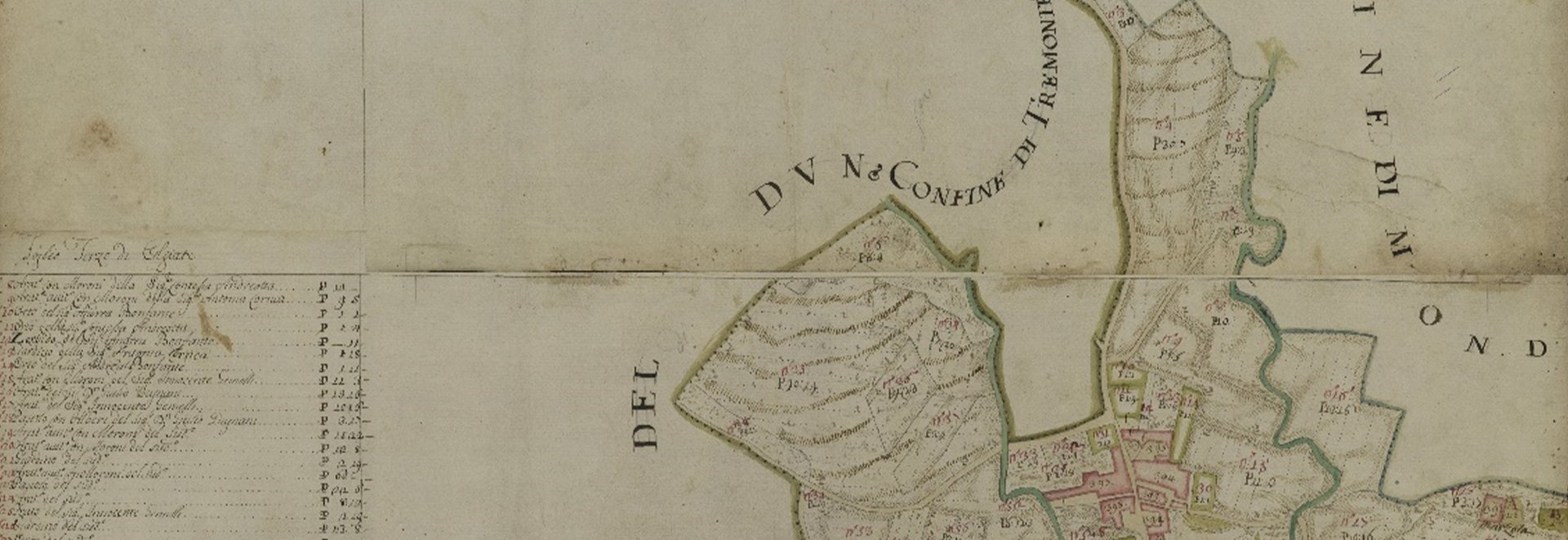
HISTORY
A JOURNEY THROUGH
A JOURNEY THROUGH FOUR CENTURIES
Since the late 17th century, the land where Villa Lucini stands today belonged to the noble Innocente Gemelli.
In 1692, Monticello was granted as a fief to the noble Bartolomeo Gemelli, who established a residence there next to the small church of San Rocco in a U-shaped building (now Villa Gerli) with a courtyard facing the road and a vast Italian-style garden, created by his son Innocente.
The Teresian Cadastre, or "Charles VI Cadastre" (Mailänder Kataster in German, meaning "Milanese cadastre"), from 1721 represents the landholdings of the Duchy of Milan, clearly outlining the perimeter of the land that would later become Villa Lucini.
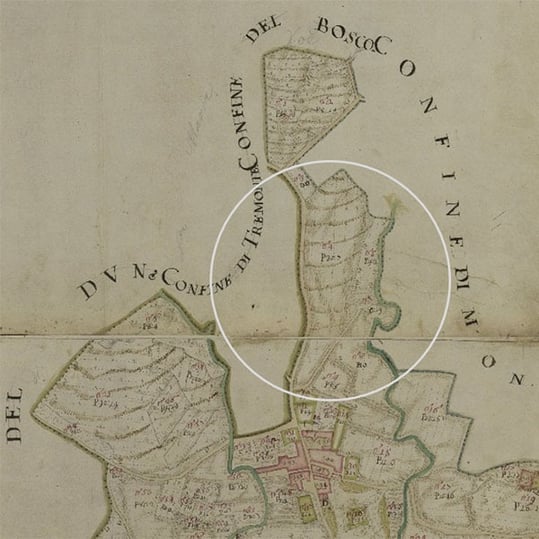

The Lombardo-Venetian Kingdom was a state dependent on the Austrian Empire, conceived by Chancellor Klemens von Metternich at the beginning of the Restoration following the collapse of the Napoleonic Empire. Its establishment was officially sanctioned in 1814 by the Congress of Vienna.
The first building structures of the Villa Lucini estate can already be seen.
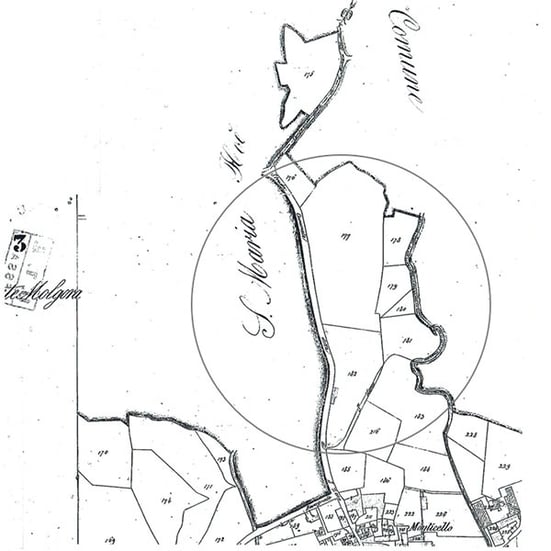

Lombardo-Venetian Cadastre, 1857
On October 29, 1886, Caterina Voltolina (widow of Boselli) purchased from Bartolomeo and Caterina Torri several buildings in the municipalities of Olgiate Molgora and Cagliano.
The sale was later formalized by Notary Alessandro Galli of Merate with a deed dated December 12, 1886. Acting as Caterina Voltolina's proxy was Felice Boselli (son of the late Ambrogio).
Among the properties acquired by the widow Boselli was the land historically described in the old land registry as “Ronco dello Rogolone”, which today corresponds to the grounds containing Villa Lucini, the Cottage, and the Belvedere.
In the ancient Brianzolo dialect, "Rogolo" means oak, and it is likely that "Rogolone" referred to the centuries-old sequoia that can still be admired in the part of the park facing the entrance of Villa Lucini.
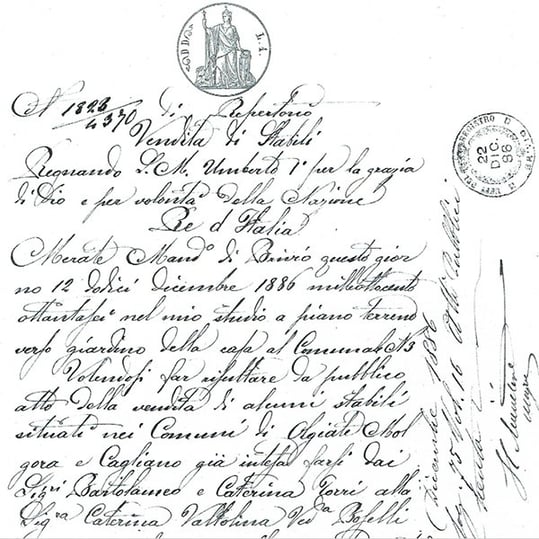

On May 1, 1888, two years after the widow Boselli’s initial purchase, Felice Boselli (son of the late Ambrogio) and Carlo Pellizzoni signed a private agreement in which Pellizzoni sold to Boselli 'the piece of land known as Il Brugolone, located in the municipality and territory of Olgiate Molgora.'
This land corresponds to the wooded hillside and flat meadow in the northern part of the park surrounding today’s Villa Lucini (parcel 177).
The toponym "Il Brugolone" originates from the medieval Latin term "Brugarium", which indicates clay-rich soil where shrubs predominantly take root, a reference to the word brughiera (moorland).
It is interesting to connect the root Brug with the Gaulish term Brig, meaning hill or elevation, leading to the hypothesis that the name Brianza itself derives from brig.
In the past, the lands of Brianza were wild and often frequented by outlaws, which gave rise to terms still in use today, such as briccone (rascal) and brigante (brigand). The word "Brig" can also be found as a suffix, root, or part of names such as Britannia, Insubri, Briançon (ancient Brigantium), Bregaglia, Brughiera, Bergamo (Berg-Comum), and in the Brianzolo dialect as Bergamin, meaning man of the mountains.
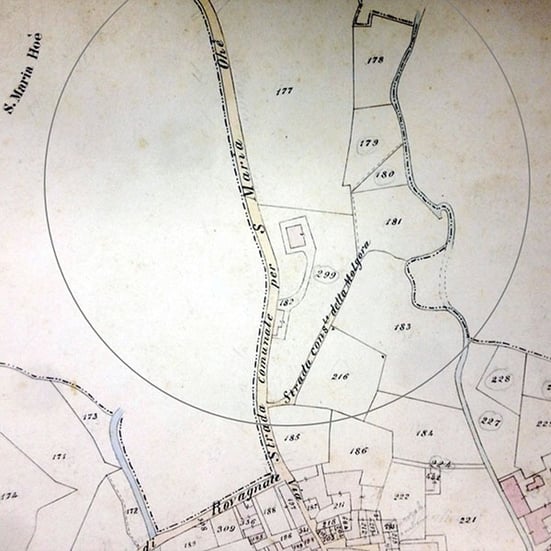

The discontinued cadastre of 1898, in sheets fg. 1 and 3, documents that around the late 19th century, the Cottage building was expanded with the addition of the South wing, giving it the configuration that still defines it today.
It can also be observed that during the same period, the Belvedere terrace was constructed, along with the wood storage area beneath it, located to the south of the estate.
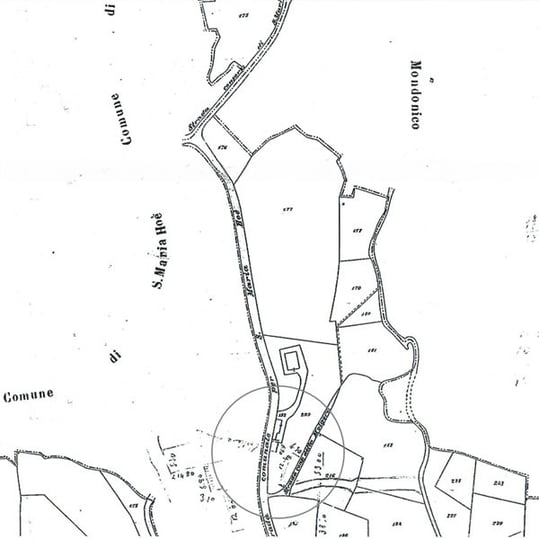

The elderly Mrs. Caterina Voltolina (widow of Boselli), weary of the local parish priest’s refusals to celebrate Mass at her residence, initiated the construction of a new church adjacent to the Villa, ensuring it would be just a few steps away from her home.
Only the outbreak of World War I halted the already advanced construction of the new church, which was later completed in 1919 thanks to the efforts of her daughter, Ida Boselli, along with Mrs. Sala and Mr. Calcaterra, who made its completion possible.
Cultural heritage census of Lombardy:
http://www.lombardiabeniculturali.it/architetture/schede/LC120-00208/
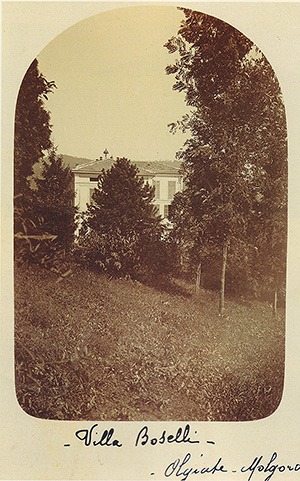

The Church of Monticello, 1933. View from the hill known as del Papén.
To the left, the southern tip of the park of Villa Lucini can be seen.
On April 29, 1941, by deed no. 12895, notarized by Notary Carpani of Milan, the villa, its buildings, and the adjoining lands (parcels 182, 299, 871), as well as the hill at parcel 177, were transferred to the Benedictine nuns—specifically, to the Monastery of San Benedetto of the Perpetual Adorers of the Blessed Sacrament, based in Milan at Via Bellotti 10. On that day, the monastery was represented by Sister Giuditta Ferrari, daughter of Daniele, the legal representative of the Moral Institution.
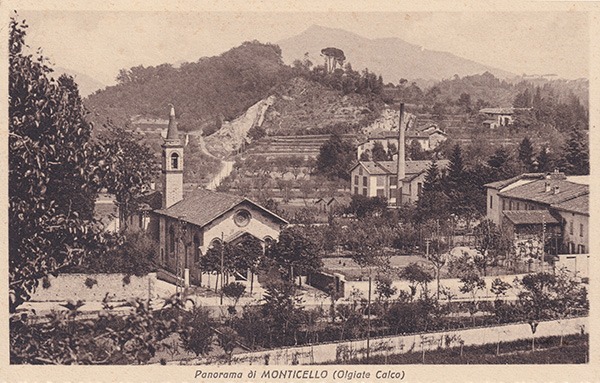

On July 16, 1954, at the office of Notary Gallavresi in Milan, under repertory number 12606, the Monastery of San Benedetto sold the entire real estate complex—except for the plots outside the perimeter walls—to Mrs. Francesca Crippa, daughter of the late Abele, married Biffi.
Notably, a certificate attached to the deed, issued on September 10, 1954, by the Mayor of the Municipality, Giuseppe Rocca, states:
"The Mayor certifies that the Villa, owned by the Monastery of San Benedetto of the Benedictine Nuns, Perpetual Adorers of the Blessed Sacrament, based in Milan and located in this municipality, was commonly known and referred to as 'Villa di Monticello'."
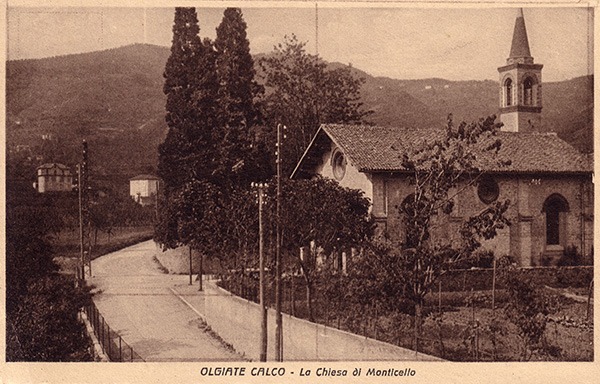

CONTACT US
Villa Lucini 1886 is an amazing place to find exactly what you are looking for, be it relief from stress, an exciting adventure or an immersive culture. Contact us so we can help you organize a memorable stay at one of the most magical places on the planet.
